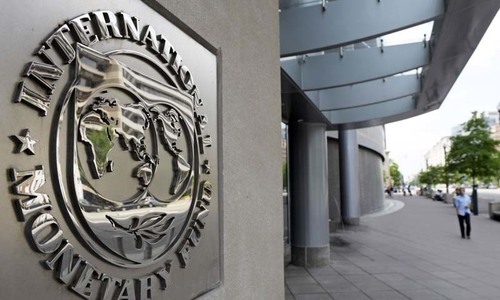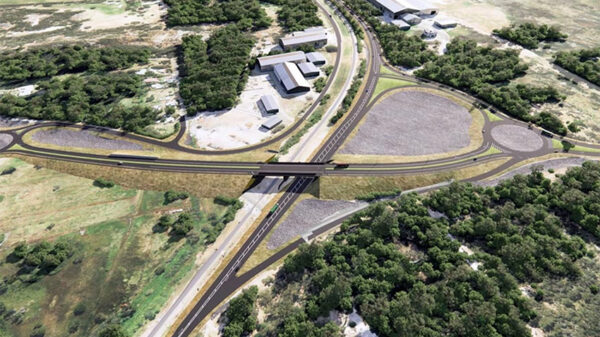It seems things are coming to a head for Pakistan’s on-again, off-again relationship with the United States to turn a corner one way or the other, and the final round of parleys is being held with Pakistan not by career diplomats from the State Department but by a technical level team of the IMF (International Monetary Fund).
As we go to press, freeing Minister Shoukat Tarin is making a last ditch effort to bring the IMF around to Pakistan’s point of view over stringent IMF conditionalities concerning taxation, utility tariffs, subsidies and just about everything touching the everyday life of every Pakistani.
The effort became necessary after technical level parleys between Pakistani and IMG teams remained inconclusive. Tarin is in a tight spot because the deck is loaded against him and he has no chips on the table. He can only use suasion; IMF holds all the levers of persuasion.
A staff level agreement in time to be presented to the executive board by end of November and ahead of Tarin’s meetings with the Fund top brass next week will give him a shy at the revival of a USD 6 billion Extended Fund Facility (EFF) program.
Apart from the precious forex inflow it represents, a revived program makes several avenues of financing available to Pakistan. On the flip side, it ups the level of hardship for the common Pakistani at a critical inflexion point ahead of the next general election in Pakistan.
A no deal scenario leads to financing drying up or being priced out of reach of Pakistan.
In the process of undertaking number crunching on the macroeconomic front, the IMF staff diagnosed yawning fiscal and current account deficit gaps – whereby corrective measures required to fix the struggling economy of Pakistan.
The budget making 2021-22 proved irrelevant even within the first quarter of the current fiscal year as the floodgates were opened without fully visualizing its consequences. Now the result is quite obvious as the twin deficit has again emerged as a major challenge for the incumbent regime. There are crystal clear signs that the economy had entered into phase of overheating so the IMF’s response will be implementing prescription in shape of “Washington Consensus” by implementing one shoe fits for all approach to slow down the economy through tightening of fiscal and monetary policies as well as devaluing the exchange rate and raising the utility prices.
IMF found that there were slippages of around PKR 1000 billion on the revenue front as the petroleum which was budgeted at PKR 610 billion could not be fully realised, as conceded by the economic managers. The IMF team also considered projections related to privatisation proceeds to the tune of PKR 252 billion in the risky zone.
There are some more slippages on the non-tax revenue side so in such circum- stances the budget deficit might exceed close to 2 percent of GDP. The primary deficit, which was considered as sacrosanct, was envisaged at 0.7 percent of GDP for the current fiscal year but now the IMF was assessing that it might exceed 1.5 percent and in some cases might go close to 2 percent of GDP till end June 2022.
On external account of economy, the IMF had projected that the current account deficit might go up to USD 12 to USD 14 billion, equivalent to over 4 percent of GDP for the current fiscal year
The Annual Plan for 2021-22 approved by the Parliament had envisaged to curtail the current account deficit at USD 2.3 billion for the whole financial year after achieving surplus in the last financial year. However, the current account deficit rebounded and rose sharply to touch USD 2.3 billion just in the first two months (July and August) for the current fiscal year. The State Bank of Pakistan (SBP) had made a fresh projection and estimated that the current account deficit might go up to USD 6.5 billion to USD 9 billion for the current fiscal year.
After establishing rising twin deficits both the budget deficit and the current account deficit by the IMF in the technical level talks, now the IMF tabled a long wish list in the shape of tough conditions to tighten the fiscal and monetary framework as well as raising electricity and gas prices.
On the fiscal front, the IMF asked Pakistan to fetch additional tax revenues of PKR 500 billion, jacking up the FBR’s target from PKR 5.8 trillion to PKR 6.3 trillion. The Fund asked for making upward adjust- ments into Personal Income Tax (PIT) for increasing tax rates for higher income brackets for salaried and non-salaried class.
The General Sales Tax (GST) exemptions for various sectors cost the national exchequer to the tune of PKR 578 billion and the IMF is asking to abolish exemptions to the tune of PKR 250 to PKR 300 billion. The Regulatory Duty (RD) on luxury items is another option under consideration.
Although the imposition of RD can be accomplished through an SRO with the approval of the ECC and the Cabinet, the government will have to present a mini budget before the Parliament to amend the income tax and sales tax laws. The IMF has suggested the government promulgate an ordinance and then table a bill before the Parliament to pass it with due course of process.
In a bid to tackle the rising current account deficit, the IMF has projected that it might be up to USD 12 to USD 14 billion for the current fiscal year so financing of CAD might get problematic if the remittances recede. However, the remittances have so far kept the momentum, with Pakistan receiving USD 2.7 billion worth in Septem- ber 2021.
The current account deficit had risen sharp- ly mainly because of a surge in prices of POL products and commodities. The federal government had made a projection that POL prices internationally would be hovering around USD 61 per barrel but the POL prices surpassed USD 71 per barrel on average in the first quarter of the current fiscal year.
The Ministry of Finance high-ups took stance in background discussions that the increased pressure on importing commodities would start receding as one million tons of wheat planned to be imported through government to government (G to G) would be abandoned because the government considered that it possessed sufficient stocks to meet domestic requirements till the arrival of new crop of wheat coming into the market in April/May 2022.
The government is still indecisive whether to import 50,000 tons of sugar or abandon it for having enough stocks to meet domestic requirement till the start of next crushing season by 15 November 2021.
With regard to importing 2 million tons to place strategic reserves, official say the tie is not right to accomplish that as the prices of the commodity are high in the world market.
In a bid to rectify further deterioration, the IMF has recommended further tightening of monetary policy and jack up discount rate to 8 percent by increasing 50 to 75 basis points from existing rate of 7.25 percent. On exchange rate, the IMF has asked to allow adjustment of currency in line with real effective exchange rate (REER).
The rupee-dollar parity stands at over PKR
172 per dollar and it would remain at around that level barring external shocks. However, it is projected that the REER may require further adjustments of rupee against dollar over the medium term.
The IMF also recommended further jacking up the base price of electricity tariff to the tune of PKR 1.40 per unit in order to curtail the surge in the monster of circular debt.
Pakistani authorities have already implemented a quarterly power tariff but if the base price is not increased, it is feared the Circular Debt Management Plan (CDMP) may not work as envisaged. The IMF wants the NEPRA law amended so the regulator can adjust the tariffs upwards or down- wards without government intervention.
With all this on the negotiation table, Pakistan and the IMF high-ups would hold policy level talks from 13 to 15 October just ahead of the annual meeting of Bretton Wood Institutions (BWIs) known as the IMF and World Bank.
Shaukat Tarin’s make last ditch effort for staff level agreement with the IMF by striking a balancing act through accepting some demands on fiscal and monetary fronts because for all practical purposes it would be the last reviews for getting a USD 1 billion tranche.
Starting budget 2022-23 (to take effect as of
1 July 2023), the government will enter ‘elections mode’ when political expediency is prioritised above the real issues of economy, which can be left for the next government to sort out. And thus will continue the boom-bust cycle of Pakistani polity.










